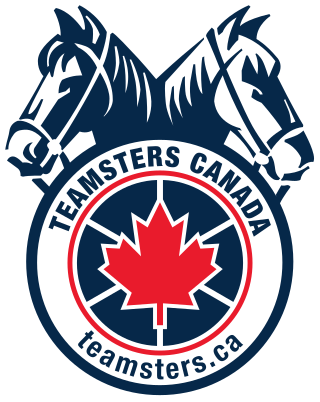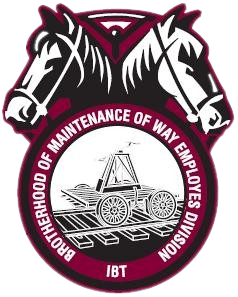Related Research Articles

James Phillip Hoffa, also known as James Hoffa Jr. or Jim Hoffa, is an American labor leader and attorney who was the tenth General President of the International Brotherhood of Teamsters. He is the son of Jimmy Hoffa. Hoffa was first elected in 1998, and re-elected in 2001, 2006, 2011, and 2016 to five-year terms. In 2018, Hoffa was elected chair of the Road Transport Section of the International Transport Workers' Federation at its quadrennial Congress in Singapore. Hoffa is the second-longest serving General President of the Teamsters Union, after Dan Tobin, who served from 1907 to 1952. Hoffa's final term as General President ended in 2022.

Alvanley Johnston was a Canadian / American locomotive engineer who became head of the Brotherhood of Locomotive Engineers (BLE), a union that covered the United States and Canada, holding the title of Grand Chief Engineer from 1925 to 1950. During his tenure the Brotherhood recovered from financial problems, weathered the Great Depression and World War II, and held out for shorter hours and higher wages in a nationwide strike in 1946.

The Iowa, Chicago and Eastern Railroad (IC&E) was a Class II railroad operating in the north central United States. It has been controlled by the Canadian Pacific Railway and operated as a part of its system since October 30, 2008. Formerly, the IC&E was jointly owned with the Dakota, Minnesota and Eastern Railroad by Cedar American Rail Holdings (CARH), making the combined system the largest class II railroad in the United States. Created by the purchase of I&M Rail Link, IC&E commenced operations on July 30, 2002. The 1,400-mile (2,300 km) line, based in Davenport, Iowa, serves the states of Illinois, Iowa, Missouri, Minnesota and Wisconsin. Principal commodities include chemicals, coal, steel, automobiles, and agricultural products. Train dispatching is performed at a joint DM&E/IC&E facility in Sioux Falls, South Dakota. On December 26, 2008, the IC&E was merged into parent CARH, which immediately merged into the DM&E.

The Brotherhood of Locomotive Engineers and Trainmen (BLET) is a labor union founded in Marshall, Michigan, on 8 May 1863 as the Brotherhood of the Footboard. It was the first permanent trade organization for railroad workers in the US. A year later it was renamed the Brotherhood of Locomotive Engineers. The B of LE took its present name in 2004 when it became a division of the Rail Conference of the International Brotherhood of Teamsters (IBT).

The Texas Mexican Railway was a short line railroad in the U.S. state of Texas operating between Corpus Christi and the Texas Mexican Railway International Bridge in Laredo, Texas. It is often referred to as the Tex Mex, or Tex Mex Railway.

Teamsters Canada is the Canadian wing of the International Brotherhood of Teamsters. Although the Teamsters have been present in Canada since 1903, Teamsters Canada was only established in 1976. The organization represents 125,000 workers in all industries. It is the largest transportation union in the country, and the largest private sector union under federal jurisdiction.
The railroad brotherhoods are labor unions of railroad workers in the United States. They first appeared in 1863 and they are still active. Until recent years they were largely independent of each other and of the American Federation of Labor.

The Brotherhood of Maintenance of Way Employes is a national union representing the workers who build and maintain the tracks, bridges, buildings and other structures on the railroads of the United States.
Union Pacific Railroad v. Brotherhood of Locomotive Engineers, 558 U.S. 67 (2009), was a United States Supreme Court decision on labor disputes.

The Brotherhood of Railroad Trainmen (BRT) was a labor organization for railroad employees founded in 1883. Originally called the Brotherhood of Railroad Brakemen, its purpose was to negotiate contracts with railroad management and to provide insurance for members.

William D. Robinson was a locomotive engineer who founded the Brotherhood of Locomotive Engineers (BLE) on 8 May 1863 during the American Civil War, America's first union for railway workers. Robinson traveled widely and oversaw rapid growth in the union's first sixteen months. After a disastrous strike he was forced to resign in August 1864, and did not hold office again, although he remained active in union affairs until his death.

Alexander F. Whitney was an American railway worker who became president of the Brotherhood of Railroad Trainmen (BRT). He was an influential labor leader during the Great Depression and World War II, and in the years immediately following the war. He was the principal leader of a two-day railroad strike in May 1946 that paralyzed the nation.

William Parker Kennedy was president of the Brotherhood of Railroad Trainmen (BRT) from 1949 to 1962.

John Frederick Sytsma was President of the Brotherhood of Locomotive Engineers (BLE) from 1976 to 1986.
Edward E. Dubroski is an American railway engineer and union official who served as the president of the Brotherhood of Locomotive Engineers.
Edward W. Rodzwicz was President of the Brotherhood of Locomotive Engineers and Trainmen (BLET), a railway workers' union in the United States.
Clarence V. Monin was President of the Brotherhood of Locomotive Engineers (BLE), a railway workers' union in the United States.
Ronald Paul McLaughlin was an American railway engineer and labor leader who was the President of the Brotherhood of Locomotive Engineers (BLE), a railway workers' union in the United States, from 1991 to 1996.
The International Association of Sheet Metal, Air, Rail, and Transportation Workers (SMART) is a North American labor union headquartered in Washington, DC, which was chartered by the AFL–CIO in 2013. The product of a merger between the Sheet Metal Workers’ International Association (SMWIA) and the United Transportation Union (UTU), SMART represents over 210,000 sheet metal workers, service technicians, bus operators, engineers, conductors, sign workers, welders, and production employees, among others, throughout the United States, Puerto Rico, and Canada. The Transportation Division represents employees on Class I railroad, Amtrak, and regional and short line railroads; bus and mass transit employees on some 45 transit systems; and airline pilots, flight attendants, dispatchers and other airport personnel. The Division's 500 local unions organize conductors, brakemen, switch men, ground service personnel, locomotive engineers, hostlers, and railroad yard masters, as well as bus drivers and mechanics.
References
Citations
Sources
- "BLE installs new international president at Miami convention". Progressive Railroading. 28 September 2001. Retrieved 2014-03-03.
- "BLE members elect Don Hahs" (PDF). UTU News. 33 (11). November 2001. Archived from the original (PDF) on 2014-06-12. Retrieved 2014-03-03.
- "Brotherhood of Locomotive Engineers and Trainmen". BLET. Archived from the original on 2012-07-17. Retrieved 2014-03-03.
- "Don Hahs reelected National President". Locomotive Engineers and Trainmen News. July 2006. Retrieved 2014-03-03.
- Greenhouse, Steven (September 19, 2007). "Teamsters File Charges Against Union Head". The New York TImes. Retrieved 2014-03-03.
- Horowitz, Carl (13 December 2009). "Rodzwicz Resigns as Locomotive Engineers President; Union Names Interim Leadership". National Legal and Policy Center . Retrieved 2014-03-03.
- Jacobs, James B.; Cooperman, Kerry T. (1 January 2011). Breaking the Devil's Pact: The Battle to Free the Teamsters from the Mob. NYU Press. ISBN 978-0-8147-4367-6 . Retrieved 3 March 2014.